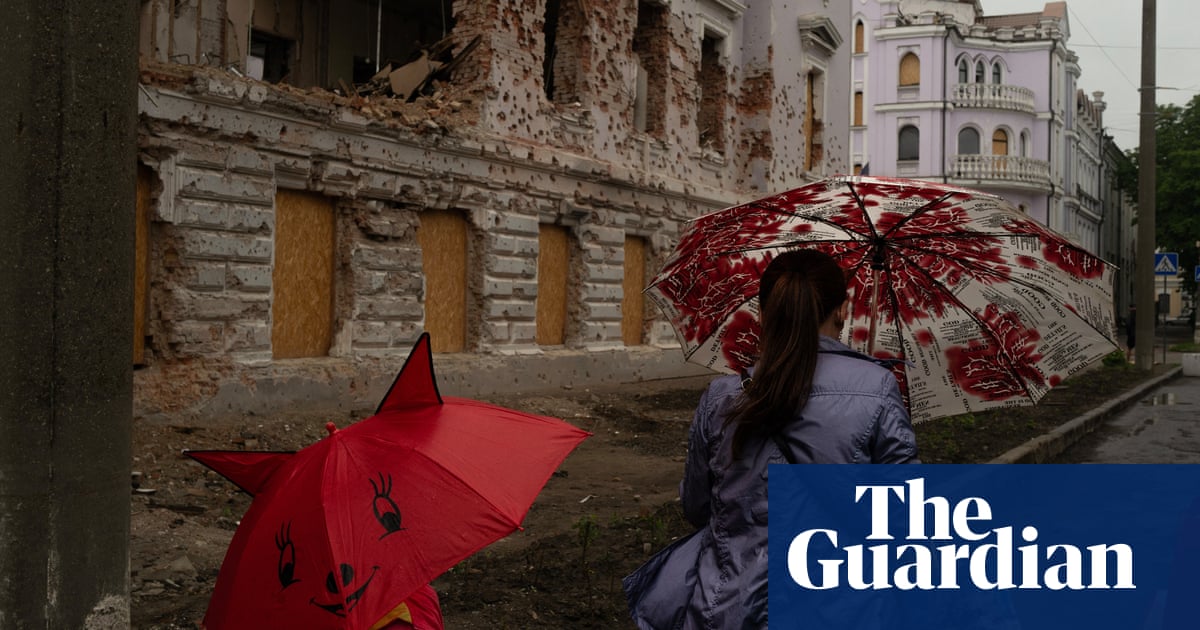Volodymyr Zelenskyy has said Ukrainian forces arepushing back against Russian forces in theborder Sumy regionwhere they have established a foothold in recent weeks. “Our units in Sumy region are gradually pushing back the occupiers,” said Ukraine’s president in his nightly video address. “I thank you! Thanks to every soldier, sergeant and officer for this result.”
The Ukrainian president provided no further details and offered no proof of Ukrainian advances in the area, andthe claim contradicts prevailing assessments of continued Russian gains in Sumy. Russia has seized over 190 sq km (73 sq miles)of the Sumy regionin less than a month, according to pro-Ukrainian open-source maps. They have captured more ground in the past days, advancing to around 20km from the city of Sumy’s northern suburbs and rendering it vulnerable to long-range artillery and drones.
The number of displaced people arriving in Sumy city is increasing, said Kateryna Arisoi, head of Pluriton, an aid organisation running shelters. “So farevacuation has been ordered in more than 200 settlements,” she said. Last week, a Russian rocket attack on Sumy city killed three people and injured 28, including three children, while also damaging several buildings.
Ukrainian presidential adviser Mykhailo Podolyak said there had been a concentration of Russian men and equipment in Sumy region because ofmonths of military operations across the border in Kursk region. He advised caution to establish details of the situation on the ground. “I think [Ukraine’s] military has the situation under control and I think we shall see a different picture in the coming days.”
Ukrainian police saidtwo people were killed and six were injured in the past 24 hoursin the eastern Donetsk region, the focus of the Russian offensive. One person was killed and 14 others were also injured in the southern Kherson region, which is partly occupied by Russian forces, police said. The authorities in Kharkiv, Ukraine’s second-largest city, said 18 people including four children were injured by Russian drone attacks over Wednesday night.
Boris Pistorius on a surprise visit to Kyiv saidGermany was not planning to deliver Taurus long-range missiles to Ukrainethat could allow it to strike deep into Russian territory. Instead, the German defence minister announced €1.9bn in additional military aid. Pistorius underscored that Germany wouldhelp Ukraine build its own long-range missile systemsand help it finance purchases of homemade material. “The first systems should be available in the coming months,”
Russian has exceeded a million troops killed or wounded in its Ukraine war, according to the general staff of the Ukrainian armed forces and western intelligence estimates. The UK defence ministry also announced the figure on Thursday. The Center for Strategic and International Studies in Washington has called it “a stunning and grisly milestone”.
Zelenskyy said he hoped to press Donald Trumpat the G7 summit this weekend to step up sanctions against Russia. The US president said at the White House on Thursday that “I’m very disappointed in Russia, but I’m disappointed inUkrainealso, because I think deals could have been made”.Two weeks ago, Trump indicated he would do something by nowif it turned out Putin had been “tapping him along”, but the US president has so far failed to follow through. The US Republican senator Lindsey Graham, a close Trump ally, is pushing what he calls a bipartisan “bone-breaking” bill to introduce a 500% tariff on countries buying Russian oil and gas – mostly targeting China and India.
